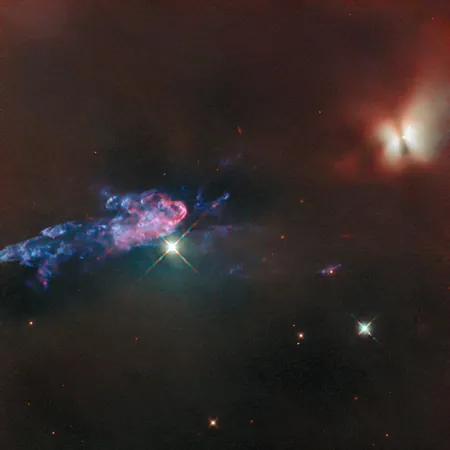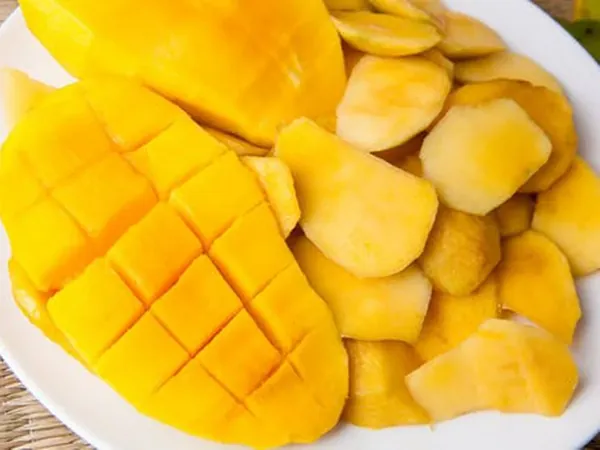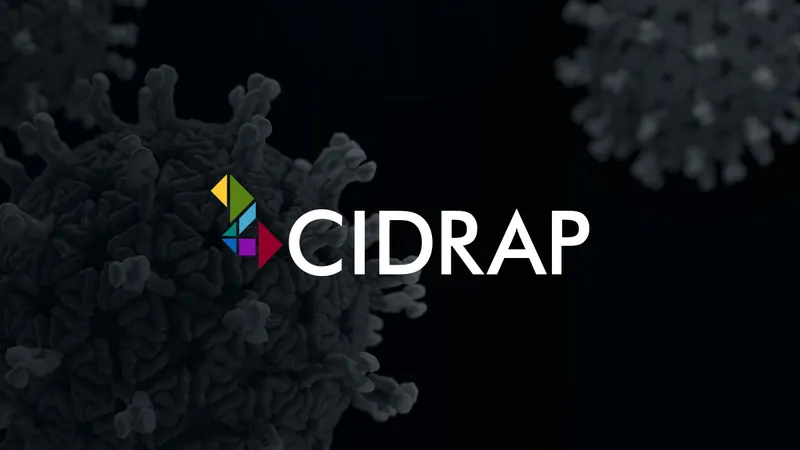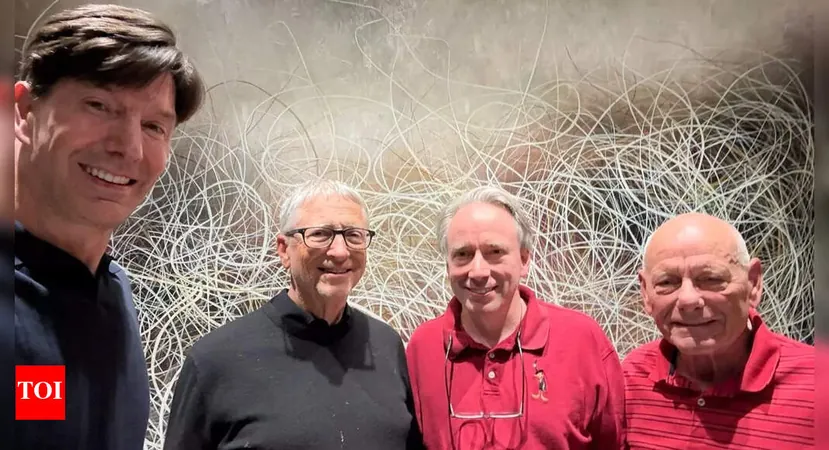
Unveiling the Cosmic Drama: Hubble Captures Young Stars Disturbing the Orion Nebula!
2025-01-22
Author: Ming
The Orion Nebula: A Star Nursery
The Orion Nebula, a breathtaking jewel in the winter night sky, is not merely a constellation; it's a bustling nursery of stars, located just a short 1,500 light-years from Earth. This stunning region can easily be spotted with the naked eye, just beneath the iconic belt of Orion the Hunter.
Hubble's Observations
Recent observations from the Hubble Space Telescope have provided a closer look at the dynamic interactions occurring within the Orion Nebula, particularly among its young, newly-formed stars. This essential astronomical feature has long been a focal point for researchers seeking to unravel the mysteries of star and planet formation in our universe.
Young Protostars: HOPS 150 and HOPS 153
Among the spectacular features captured by Hubble are two young protostars named HOPS 150 and HOPS 153, identified through the Herschel Orion Protostar Survey, which catalogs over 400 young stellar objects nestled in the dense molecular clouds of Orion. HOPS 150, residing in the upper-right corner of the Hubble image, is actually a binary star system, where two young stars orbit one another, each enveloped by its own accretion disk. The dust feeding into this system is colossal—spanning more than 2,000 astronomical units (AU), scientists estimate that it is roughly halfway on its journey to becoming a fully matured star.
The Role of HOPS 153
While HOPS 150 steals the spotlight, its neighbor HOPS 153, though located just outside the frame, plays a crucial role in this cosmic ballet. Researchers believe that HOPS 153 is a much younger protostar, emitting more infrared radiation and surrounded by a thick shroud of dust. This dust not only obscures the star from direct view but also absorbs its light and re-emits it in the infrared spectrum. This characteristic makes HOPS 153 particularly challenging to observe directly.
The Interplay of Forces in Star Formation
The process of star formation isn't just about gathering material; it's a complex interplay of forces at work. As young stars like HOPS 153 gather mass, they frequently launch powerful jets of material from their polar regions. These jets can siphon off as much as 30% of a star's accretion power. When these jets collide with the interstellar medium, they create brilliant displays of bow shocks and other exciting features, illuminating the surrounding gas and altering the environment in a significant way.
The Dynamics of Young Stellar Objects
Interestingly, young stellar objects (YSOs) like HOPS 153 rotate much faster than their mature counterparts, giving rise to stronger magnetic fields that influence both accretion processes and the jets themselves. This interaction generates heat, creates bubbles in surrounding gas, and ultimately impacts the formation of neighboring stars and planets. The extensive jets can even stretch for several light-years, painting a vivid picture of the chaos and beauty of cosmic creation.
Challenges in Observing Star Formation
Studying these young stars poses unique challenges due to the dense dust that often obscures them. However, their powerful jets can become the most visible indicators of star formation activities, offering astronomers valuable insights.
The Broader Impact of Young Stars
Stars seldom form in solitude. As they draw materials and interact with their environments, these young stars shape the cosmos, paving the way for future star systems. The ongoing research in this field is vital, and stunning images from instruments like Hubble continue to illuminate the remarkable processes that govern the birth and evolution of stars across our universe.
Looking Ahead
Stay tuned as astronomers dive deeper into the cosmic mysteries of the Orion Nebula—what secrets will the next generation of telescopes unveil?




 Brasil (PT)
Brasil (PT)
 Canada (EN)
Canada (EN)
 Chile (ES)
Chile (ES)
 Česko (CS)
Česko (CS)
 대한민국 (KO)
대한민국 (KO)
 España (ES)
España (ES)
 France (FR)
France (FR)
 Hong Kong (EN)
Hong Kong (EN)
 Italia (IT)
Italia (IT)
 日本 (JA)
日本 (JA)
 Magyarország (HU)
Magyarország (HU)
 Norge (NO)
Norge (NO)
 Polska (PL)
Polska (PL)
 Schweiz (DE)
Schweiz (DE)
 Singapore (EN)
Singapore (EN)
 Sverige (SV)
Sverige (SV)
 Suomi (FI)
Suomi (FI)
 Türkiye (TR)
Türkiye (TR)
 الإمارات العربية المتحدة (AR)
الإمارات العربية المتحدة (AR)